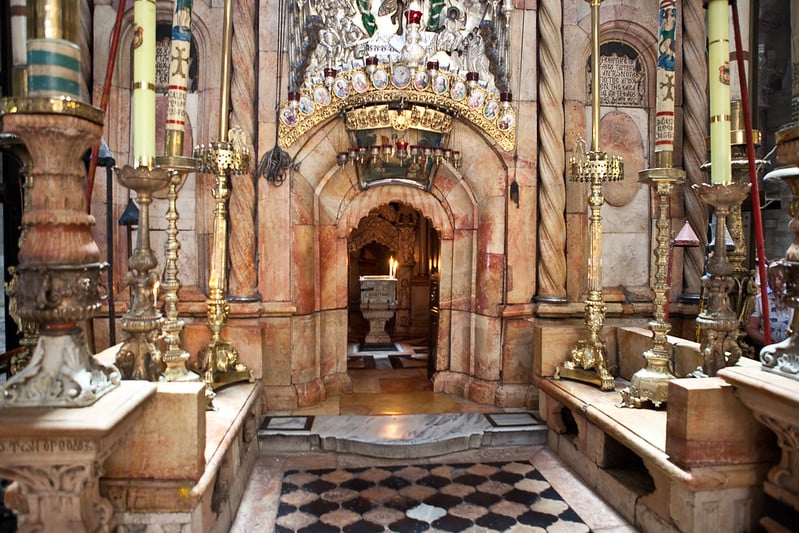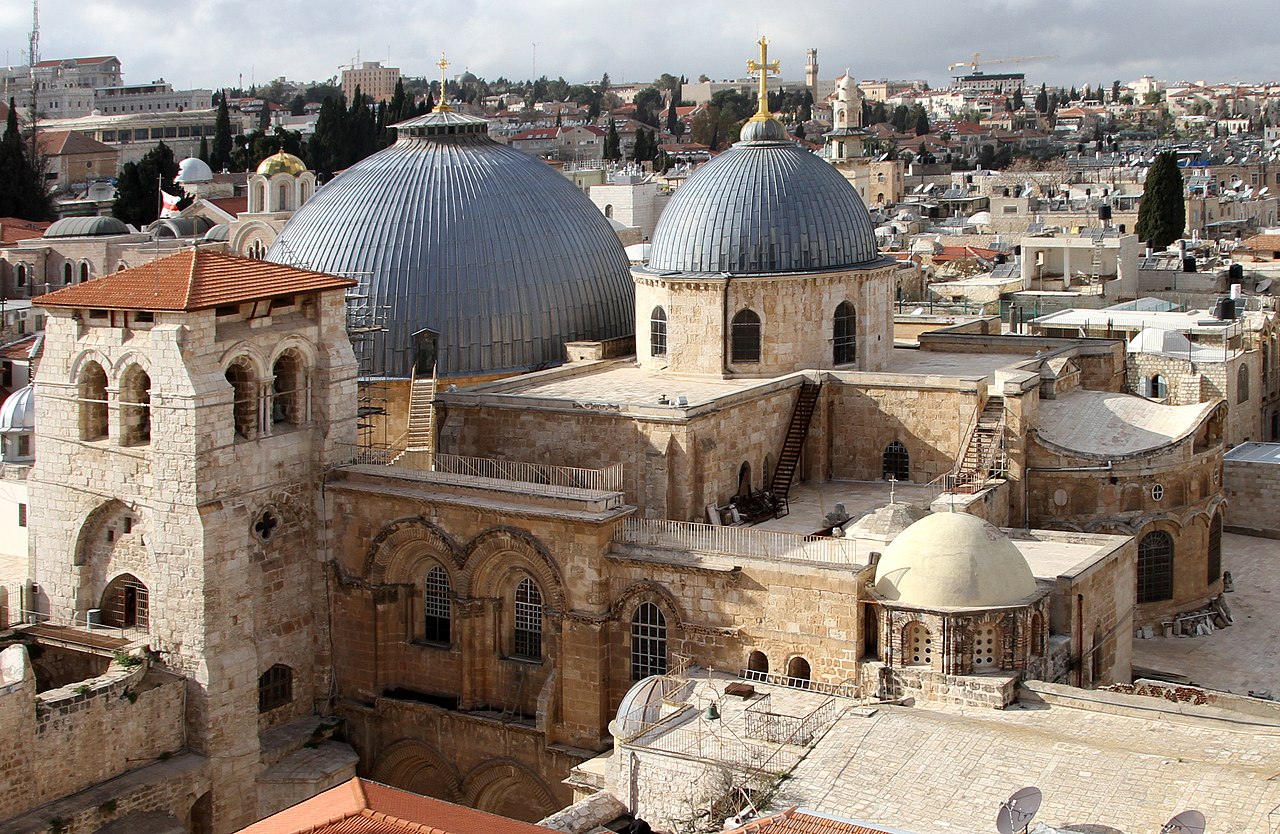
Jesus Christ was crucified approximately two thousand years ago, in the spring of 33 CE. There is a lot of focus on his burial and tomb in the Bible. The tomb, as has been thought for over a thousand years, is located at Jerusalem’s Church of the Holy Sepulchre.
Yet, is it supported by evidence? Can we say with any certainty that this traditional site really is the authentic tomb of Jesus?
What the Bible says about the authentic tomb of Jesus
By far the oldest and most valuable source of information about the authentic tomb of Jesus is the Bible. The gospel accounts, which record his death and burial, were all written before the end of the first century. This means that they come from just decades, at most, after Jesus’ death. From a historical perspective, that makes them incredibly valuable.
According to the gospel accounts, the Romans took Jesus outside the walls of Jerusalem to execute him. They did not take him far, however. He was apparently killed only just outside the city walls. This was close enough that the gospels record Jesus making reference to the fact that he would not be killed ‘outside Jerusalem.’
Jesus died at about three o’clock in the afternoon. After this, his followers prepared his body for burial. Evidently, they did not have much time to do this, since the following day was a Sabbath. Since the days began at sundown, this means that Jesus’ followers only had about three hours to prepare Jesus’ body for burial and then bury it. The Jews could not work nor travel on the Sabbath.
Therefore, it is evident that Jesus’ tomb is most likely reasonably close to his site of execution. In fact, we could plausibly conclude that they were right next to each other, although according to Biblical evidence, this is uncertain.

The traditional location of Jesus’ tomb
So, how does the traditional location of Jesus’ tomb tie in with these facts? Does it contradict them, or is it consistent with the evidence? The Church of the Holy Sepulchre is located within the walls of present-day Jerusalem. However, evidence indicates that it was outside the walls of the first-century city. Thus, it would be consistent with Jesus being executed and buried in that area.
Archaeology has also provided information which may support the idea that this was the authentic tomb of Jesus Christ. Excavations in the 1960s have revealed that first-century inhabitants of Jerusalem used this site as a burial ground. The Bible tells us that Joseph of Arimathea buried Jesus in a tomb that he had originally intended to use as his own family’s tomb.
With this fact in mind, it makes perfect sense that the tomb of Jesus would be in a location that the inhabitants of the city were already using as a burial ground.
How did this tradition of Jesus’ tomb begin?
So far, we can see that the traditional location is broadly consistent with the historical account found in the Bible. However, it is definitely worth looking at how the tradition surrounding this location evolved.
This belief goes back to the fourth century, which was the time of Emperor Constantine. That emperor sent his mother to search for the execution site and tomb of Jesus along with the help of two prominent bishops. The site that they identified was then occupied by a temple of Venus. They decided that this was the location of Jesus’ tomb on the basis of crosses they found in the area.
Specifically, they found three crosses. As the story goes, they brought each one in turn to a woman who was passing away. Upon touching the third one, the woman recovered. On this basis, they concluded that this was the true cross, the instrument of Jesus’ execution. Therefore, they concluded that this was where the Romans had executed him.
Constantine ordered that the temple be replaced by a church. Underneath, the builders found a rock-cut tomb. Naturally, Constantine’s mother and the bishops helping her identified this as the authentic tomb of Jesus Christ.
Is this really the authentic tomb of Jesus?
As we can see, the basis for this tradition is not particularly strong. It is not the result of a tradition that supposedly goes back to the first century but was first recorded in the fourth century. Rather, this tradition emerged as the result of a conscious effort to try to locate Jesus’ tomb.
Thus, we are fully aware of the logic that went into identifying this location. The logic in question is that some crosses were found on the site, one of which allegedly healed someone’s grave sickness.
This is not a strong basis on which to construct a historical conclusion. In terms of actual evidence, what this does show is that there is evidence that executions occurred here. If the Romans had one specific spot in which they always took people to be executed during their rule of Judea, then this would be significant. As it is, though, there is no evidence of this.
In summary, the traditional location of Jesus’ tomb, the Church of the Holy Sepulchre, is consistent with the broad facts provided by the Bible regarding Jesus’ death and burial. Therefore, it could be his authentic tomb. Nonetheless, there is no definitive evidence that this really is the right location. The accounts in the Bible are simply not specific enough to allow us to form any definitive conclusions.
See all the latest news from Greece and the world at Greekreporter.com. Contact our newsroom to report an update or send your story, photos and videos. Follow GR on Google News and subscribe here to our daily email!



